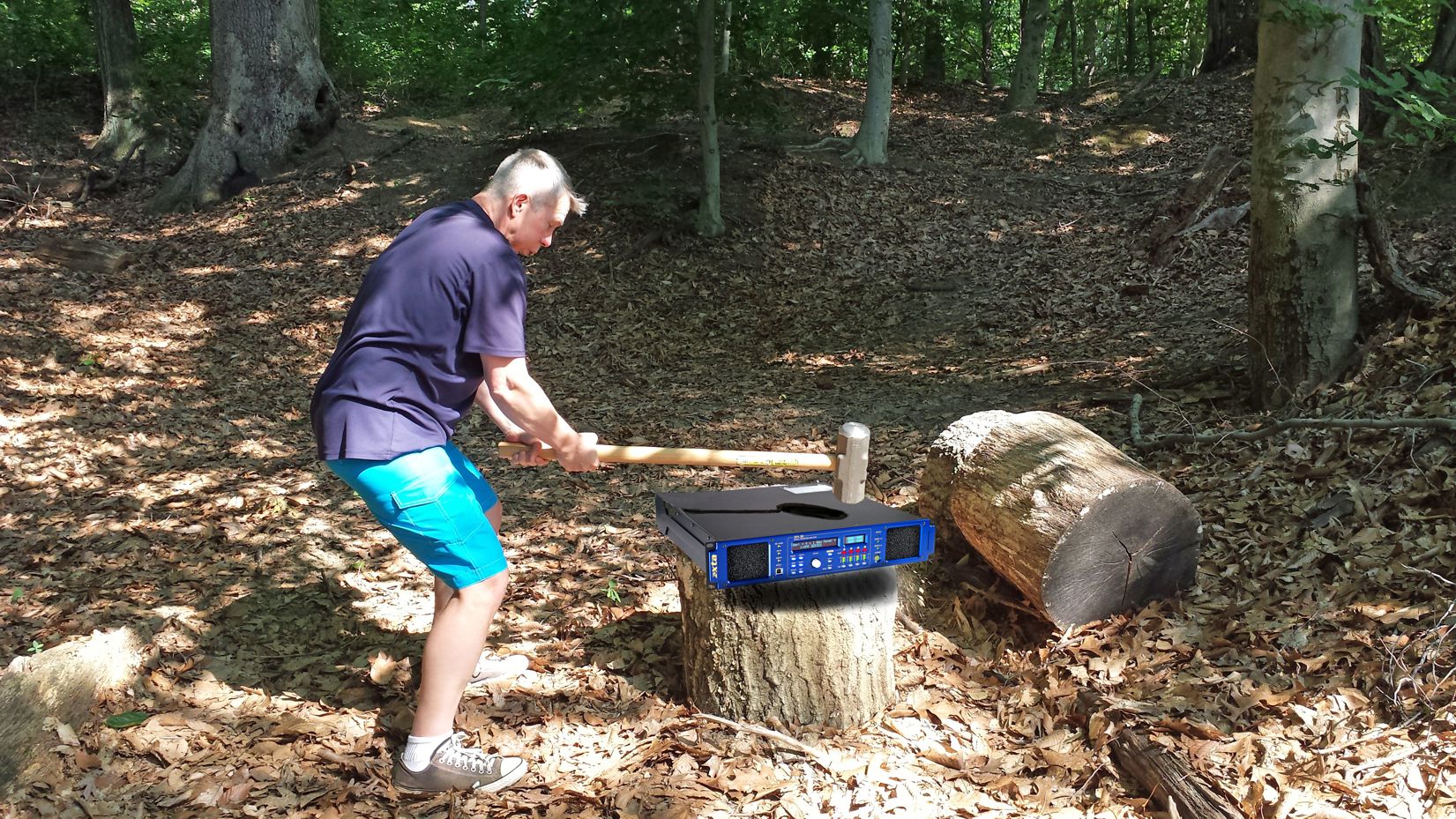
I’m sure you’re thinking this post is now going to tell you about how reliable our amplifiers are.
How they are designed to the highest standards, mechanically and electrically rugged, bulletproof protection.
Well yes, of course.
But what about external conditions – the things you can’t control?
What about when someone uses too low current a breaker or loads too many amps on a phase and the power keeps tripping?
What about when, despite being told about channel loading, there are still eight subs on that output and the amp overheats?
And what about the totally unforeseeable circumstance of someone tripping over the mains cable?
In all these cases all amplifiers, no matter who manufactures them, will behave the same way – the sound will stop.
And no-one wants silence in the middle of a gig, or the middle of a club night.
But what about the potentially more serious situation of playing out emergency evacuation messages and the amplifier not working?
This is where reliability needs to extend to something outside the box.
Realising that it’s unlikely that the biggest DPA and DNA amplifiers will be used in these applications, we decided to add a little extra backup to
the (current) baby of the ranges by including a deceptively simple way of allowing another amp to automatically take over should the worst happen.
The DPA40 and DNA40 both support automatic backup switching through use of the already built-in output protection relays.
By permitting access to the other pole of the protection relays, if the amplifier loses power, or goes into a protection mode, the relays will disconnect the speakers from the power amplifier channels.
In doing so, they automatically connect the speakers to the Speaker Backup Inputs on the Phoenix connectors on the rear panel:
The outputs of the secondary backup amplifier should be rated the same (so by that we mean use the same amplifier for backup purposes). It’s then just a case of connecting the outputs of the secondary amplifier to the backup inputs of the main amp that has the speakers connected to it. Make sure the two amps are set up the same, with regards to levels, routing, sources etc. and make sure the audio is y-split to both as appropriate.
As important is that the backup amp is on a different supply – be that a UPS or a different ring main so should the worst happen – it won’t also lose power!
All you need is four breakout cables from the secondary amps Speakons wired to four Phoenix connectors (note that the polarity of channels 2&4 inputs is reversed – so these need to be wired up correctly!) and to make sure both amps stay powered at all times.
Should the worst happen, the secondary amp will instantly be connected to your speakers with no intervention required!
So, just how reliable is your amplifier?
Here are the TechNotes, DPA and DNA, to answer that question for you 🙂


